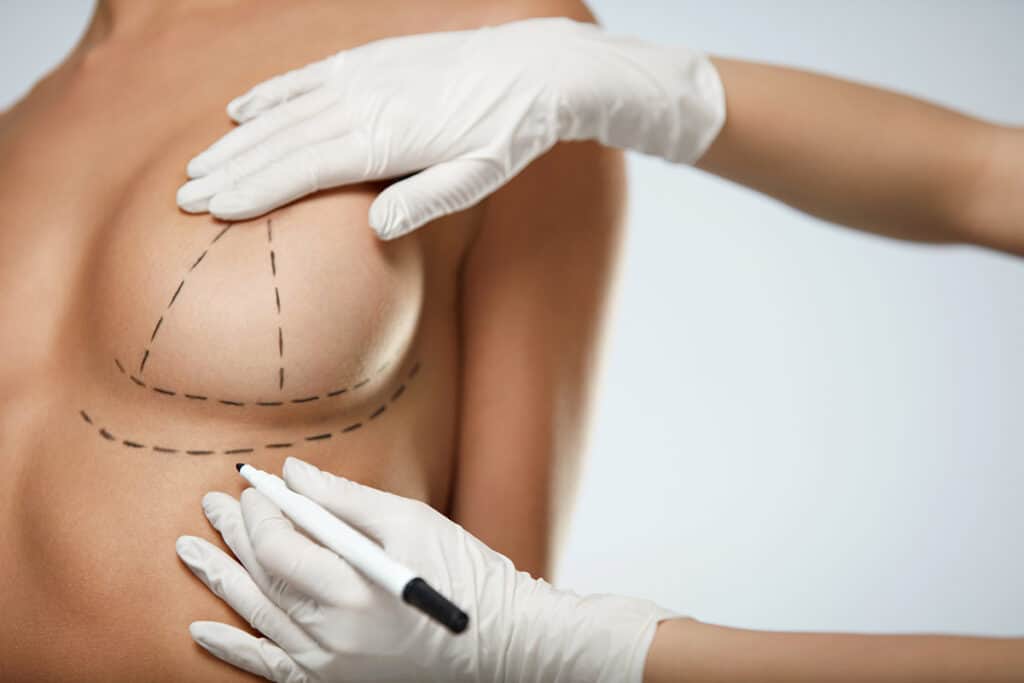
Women experience constant breast changes with monthly hormone fluctuations, and the breasts change drastically after pregnancy and breastfeeding. So naturally the question comes up when is a breast lift medically necessary? Weight gain or loss can also affect the breasts, and most women can tell they have some degree of drooping breasts when they look in the mirror. There are several ways to figure out if you would benefit from a breast lift. Our board-certified plastic surgeon in Sacramento can determine the best surgical approach for your procedure.
The Pencil Test
While the pencil test doesn’t hold merit in the doctor’s office, this quick at-home activity can give you an idea of your degree of breast ptosis (drooping). Lift one breast, place a pencil in the crease underneath, and then release the breast tissue. If there is enough sagging tissue to hold the pencil in place, you may be a good candidate for breast lift. Pay attention to the direction and location of the nipple in relation to the pencil, as this can indicate the severity of breast drooping.
Nipple Position and Placement
The ideal breast shape has nipples that point outward and sit above the breast crease (inframammary fold) with minimal breast tissue extending past the fold. Breast ptosis is split into grades, including:
- Grade 1: Mild breast ptosis with nipples in line with the inframammary fold.
- Grade 2: Moderate breast ptosis where the nipples sit one to three centimeters below the crease but still point outward.
- Grade 3: Severe breast ptosis happens when the nipple and areola (darker skin tissue around the nipple) extends more than three centimeters under the inframammary fold. Women with grade three ptosis can benefit from breast lift and breast augmentation with breast implants for the best results.
The breast tissue under the nipple may also droop lower than the fold, causing pseudoptosis.
Surgical Approaches to Breast Lift
The severity of breast ptosis dictates the surgical technique, and the varying stages require a customized approach. Dr. Donald Hause may use one of these breast lift (mastopexy) options:
- Binelli (Doughnut) Mastopexy: Best for mild breast drooping, the doughnut breast lift involves two circular incisions in the areolas. The tissue in the inner portion of the “doughnut” is removed, and the skin is pulled together like the strings of a purse. Breast augmentation combined with breast lift often uses the Binelli approach.
- Lejour Limited Scar Breast Lift: Dr. Hause molds and reshapes the breast tissue into a new cone suspended higher on the chest wall held in place with internal sutures. The Lejour mastopexy uses the two circular incisions from the doughnut lift and adds another that extends to the breast fold. This technique may lead to more natural-looking and longer-lasting results.
- Vertical Mastopexy: The vertical breast lift offers the best access to breast tissue and is used to correct severe breast ptosis and improve breast shape with an implant. The anchor incision uses two circles around the areola, a line to the breast crease and another along the fold, forming an anchor shape. Vertical mastopexy can achieve the most significant improvement in chest position and breast shape.
If you have signs of breast ptosis, contact Dr. Hause at Sacramento Aesthetic Surgery today by calling (916) 646-6869 or filling out our online contact form.
